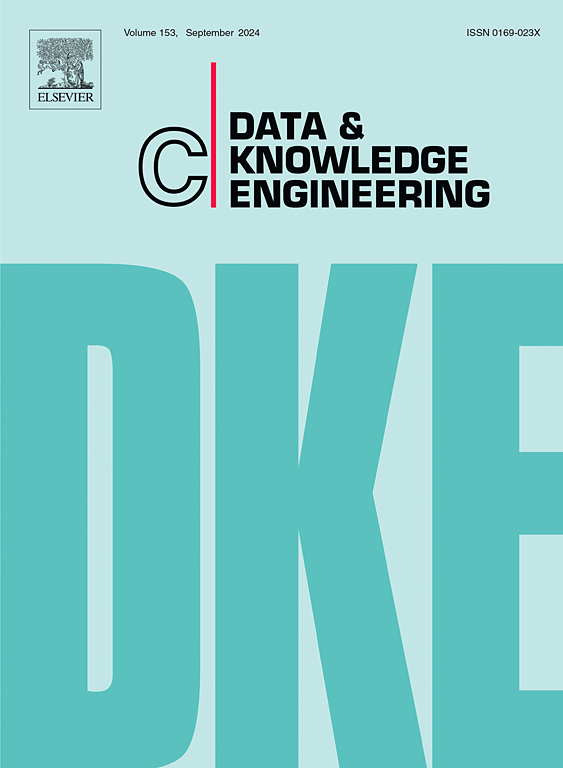Privacy-preserving cross-network service recommendation via federated learning of unified user representations
IF 2.7
3区 计算机科学
Q3 COMPUTER SCIENCE, ARTIFICIAL INTELLIGENCE
引用次数: 0
Abstract
With the emergence of cloud computing, the Internet of Things, and other large-scale environments, recommender systems have been faced with several issues, mainly (i) the distribution of user–item data across multiple information networks, (ii) privacy restrictions and the partial profiling of users and items caused by this distribution, (iii) the heterogeneity of user–item knowledge in different information networks. Furthermore, most approaches perform recommendations based on a single source of information, and do not handle the partial representation of users’ and items’ information in a federated way. Such isolated and non-collaborative behavior, in multi-source and cross-network information settings, often results in inaccurate and low-quality recommendations. To address these issues, we exploit the strengths of network representation learning and federated learning to propose a service recommendation approach in smart service networks. While NRL is employed to learn rich representations of entities (e.g., users, services, IoT objects), federated learning helps collaboratively infer a unified profile of users and items, based on the concept of anchor user, which are bridge entities connecting multiple information networks. These unified profiles are, finally, fed into a federated recommendation algorithm to select the top-rated services. Using a scenario from the smart healthcare context, the proposed approach was developed and validated on a multiplex information network built from real-world electronic medical records (157 diseases, 491 symptoms, 273 174 patients, treatments and anchors data). Experimental results under varied federated settings demonstrated the utility of cross-client knowledge (i.e. anchor links) and the collaborative reconstruction of composite embeddings (i.e. user representations) for improving recommendation accuracy. In terms of RMSE@K and MAE@K, our approach achieved an improvement of 54.41% compared to traditional single-network recommendation, as long as the federation and communication scale increased. Moreover, the gap with four federated approaches has reached 19.83 %, highlighting our approach’s ability to map local embeddings (i.e. user’s partial representations) into a complete view.
通过统一用户表示的联邦学习来保护隐私的跨网络服务推荐
随着云计算、物联网等大规模环境的出现,推荐系统面临着几个问题,主要是(i)用户-物品数据在多个信息网络中的分布;(ii)隐私限制以及这种分布导致的用户和物品的局部概况;(iii)不同信息网络中用户-物品知识的异质性。此外,大多数方法基于单一信息源执行推荐,并且不以联邦方式处理用户和项目信息的部分表示。在多来源和跨网络的信息设置中,这种孤立和非协作行为通常会导致不准确和低质量的推荐。为了解决这些问题,我们利用网络表示学习和联邦学习的优势,提出了一种智能服务网络中的服务推荐方法。虽然NRL被用来学习实体的丰富表示(例如,用户、服务、物联网对象),但联邦学习有助于基于锚用户的概念协同推断用户和项目的统一配置文件,锚用户是连接多个信息网络的桥梁实体。最后,这些统一的配置文件被输入到联邦推荐算法中,以选择评价最高的服务。使用智能医疗保健环境中的一个场景,在基于真实电子医疗记录(157种疾病、491种症状、273 174名患者、治疗和锚点数据)构建的多路信息网络上开发并验证了所提议的方法。在不同联邦设置下的实验结果表明,跨客户端知识(即锚链接)和复合嵌入(即用户表示)的协作重建对于提高推荐准确性的效用。在RMSE@K和MAE@K方面,只要联邦和通信规模增加,我们的方法比传统的单网络推荐提高了54.41%。此外,与四种联合方法的差距达到了19.83%,突出了我们的方法将局部嵌入(即用户的部分表示)映射到完整视图的能力。
本文章由计算机程序翻译,如有差异,请以英文原文为准。
求助全文
约1分钟内获得全文
求助全文
来源期刊

Data & Knowledge Engineering
工程技术-计算机:人工智能
CiteScore
5.00
自引率
0.00%
发文量
66
审稿时长
6 months
期刊介绍:
Data & Knowledge Engineering (DKE) stimulates the exchange of ideas and interaction between these two related fields of interest. DKE reaches a world-wide audience of researchers, designers, managers and users. The major aim of the journal is to identify, investigate and analyze the underlying principles in the design and effective use of these systems.
 求助内容:
求助内容: 应助结果提醒方式:
应助结果提醒方式:


